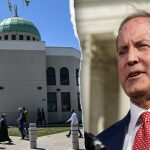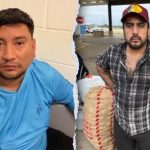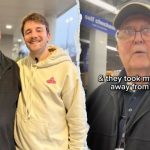LATAKIA, Syria — At first glance, Latakia looks to be one of the better places in Syria. Nestled on the Syrian coast, it was spared the worst horrors of the country’s 14-year civil war. A former stronghold of the Assad regime, the city was never the scene of the devastating fighting that took place elsewhere. Wide boulevards and a thriving cafe culture, the product of the city’s large student population, give the impression of normality here.
More recently, however, Latakia found itself thrust uncomfortably into the spotlight. Months of building tensions between Sunni Muslims, who form three-quarters of Syria’s population, and Alawites, the sect that former dictator Bashar Assad and his inner circle belonged to, snapped in early March. The paroxysm of violence from March 6 to 10 killed hundreds and has not yet fully abated, in perhaps the greatest challenge to President Ahmed al Sharaa’s rule to date.
Sharaa, formerly known as Abu Mohammad al Jolani, was the architect of one of the Middle East’s most stunning reversals in modern history last year. Sharaa was the head of the Hay’at Tahrir al Sham rebel coalition, and his forces had been confined to Syria’s northwest Idlib province for years, as Assad, backed by his Russian and Iranian allies, had reestablished control over most of the country by 2020. On Nov. 27, 2024, that all changed. With Assad’s allies weakened and distracted, HTS launched a surprise offensive that toppled the dictator in just 11 days, entering the capital Damascus on Dec. 8. After 54 years of Assad family rule, Syria found itself in a new era.
Latakia was out of the way of the main rebel thrust. It was not until after Damascus had fallen that rebel forces entered the city. Many locals, while cautious, celebrated the regime’s fall.
“I stayed up all night that day, just shouting with joy,” said Israa, a 24-year-old Alawite student in Latakia. (Israa is not her real name. She requested a pseudonym given the security situation.) “We were not able to breathe for 14 years — the regime would arrest you for anything after the war started. I was a bit afraid of the rebels, of course — many of them are jihadists, and we didn’t know how they would treat us. But we were hopeful at first,” she said.
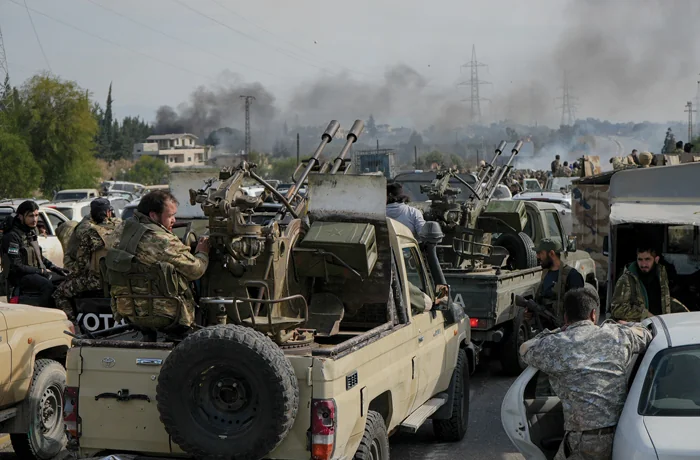
Latakia, like everywhere else in Syria immediately after the regime’s fall, was quiet for a time. Events had played out so quickly that most were still trying to process the new reality. Within a few weeks, however, violent clashes began to occur. The central province of Homs, home to a mixed Sunni-Alawite population, saw a steady uptick in revenge killings, as local Alawites, accused of enabling the former regime, were shot and killed by Sunni militants.
Some Alawites said they were targeted earlier, even just days after the regime’s collapse.
Adam, a 29-year-old Latakia native, was in the midst of his mandatory military service when rebels took Damascus.
“I had avoided the army for years, bribing the recruiters so that I wouldn’t have to serve,” Adam said, seated in one of Latakia’s cafes. “Finally, I wasn’t able to afford it any longer. They sent me to the military academy in Homs and then to Qatana,” a major garrison town southwest of Damascus.
Adam was aware of the rebel offensive, but his commanders had downplayed it. It was not until 3:00 a.m. on Dec. 8, as the first rebel units reached the capital, that his superiors finally allowed him and the other conscripts to leave their base. Hundreds of them threw down their weapons, stripped off their uniforms, and started walking to Damascus.
“I met my first rebel fighters in the city center,” Adam said. “I had no idea what to think. After all these years of war, this was my first time actually encountering someone from the other side. It was surreal.” The first fighters treated him kindly enough, although they warned him that not everyone would have such an opinion. One of them warned him to disguise his accent, which immediately identified him as an Alawite.
He would soon see why this warning was necessary. Walking with three of his squadmates, all Alawites, he made it to the suburb of Harasta, in the capital’s northeast. There, they searched for transport to take them to Latakia. Adam said a rebel patrol found them and ordered them to come with them.
“They told us they would take us to Homs,” the ex-soldier said. “We started driving there, and one of the men, with a big beard, started cursing us. He got very angry, telling us, ‘You killed my brother, all you bastards from the coast.’ I was terrified, but I could do nothing.”
Once they arrived in Homs, the rebels separated them. Adam and another man were allowed to leave, but their other two friends were not.
“They forced them into an old police station there,” Adam said. “The bearded man told me not to ask questions and to leave immediately before they changed their minds. I eventually made it back to Latakia, but I have not heard from my two comrades since. I think it is clear what happened to them.”
As the sectarian violence in the countryside grew, conditions in Latakia were rapidly becoming a powder keg.
“In the last few months, the economy here has all but collapsed,” Israa said. “People were already in a bad situation, making $40 or $50 a month, but now they don’t even have that — no salaries have been paid since the regime fell. There are kidnappings all the time, either for ransom or in revenge. Crime is getting worse: People are desperate, and there’s almost no security here at all.”
Then, on Feb. 26, there was a shootout in Qardaha, the hometown of the Assad family and a notorious hotbed of ex-regime elements. Both members of the new security forces and local Alawite militants were injured as clashes continued for hours before government reinforcements arrived.
Events in the villages were no longer staying contained. That evening, as locals relaxed in Latakia’s Alawite-populated neighborhood of al Ziraa, they were suddenly disturbed by a convoy of Sunni fighters roaring down the street. Half a dozen cars loaded with Sunni militants waved Islamist flags and brandished their weapons at the onlooking locals. Some shouted anti-Alawite curses. Others stuck to chants of “Allahu Akbar.” In the end, the convoy departed without violence, leaving Alawite residents shaken.
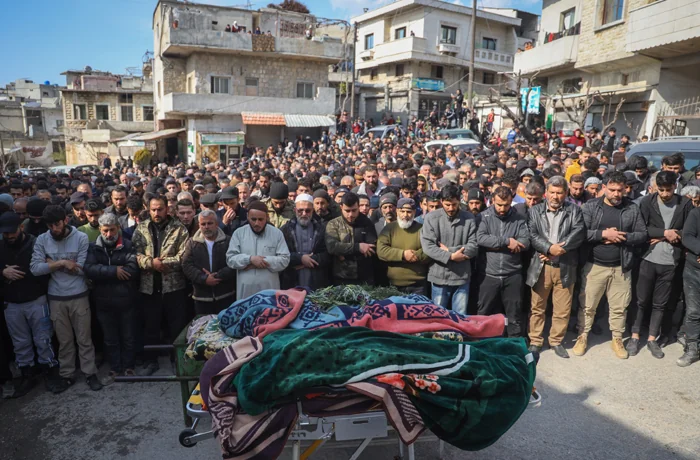
A week later, the coast erupted.
On the evening of March 6, large-scale fighting broke out all across Latakia province. A series of coordinated attacks by ex-Assad regime elements targeted dozens of checkpoints and bases manned by the new government’s security forces. Within hours, large sections of the coast had effectively fallen out of government control.
“The situation on the first day was extremely serious,” said Gregory Waters, an associate fellow researching Syria at the Middle East Institute. “The insurgents basically cut the security forces into little islands cut off from one another, besieged in half a dozen different bases and hospitals. In the city of Baniyas, they took over maybe as much as 80% of it.”
Israa was at her home in the suburbs of Latakia when the fighting started.
“At about 8 p.m., we just started hearing gunfire everywhere,” she said, her voice shaking. “It was terrifying. The old Assad regime thugs, led by a guy named Moqdad Fatiha, tried to kill all the new government’s fighters. We locked our doors and stayed inside, hoping to avoid it.”
With the situation rapidly spiraling out of control, Sharaa issued a call for general mobilization. Anyone who had a gun was to head to the coast to help crush the uprising. Thousands answered, including many looking for any excuse to kill Alawites, armed or otherwise.
“On the 7th, the [government-aligned] militias came,” Israa said. “Armed Sunni men were going to every house, knocking on the doors, calling us to come out. Everyone stayed dead silent, just hiding, but we could hear them going into houses, and then gunfire. They were proud of it — it was like a game to them.”
As armed Sunni fighters descended en masse onto the coast, any semblance of government control over the operation quickly disappeared. Two days of complete chaos reigned as anyone with a rifle and a grudge did whatever they pleased.
“The core of the issue is that the Syrian government has very few fighters that it can actually trust to obey commands,” Waters said. “Outside of their core group from Idlib, who are now spread extremely thin across the country, most of the pro-government fighters are semi-independent. You have figures like Abu Amsha, from the [Turkish-backed] Syrian National Army, and he just does what he wants, because he’s quite powerful. He’s also just a criminal. So that’s how you get these scenes from villages, these videos, where it’s clear that every Alawite male, armed or otherwise, was executed.”
It would take four full days for the government to restore a semblance of order on the coast. In the meantime, the death toll was immense. The Syrian Network for Human Rights, a watchdog group, reported the extrajudicial killing of at least 1,034 people between March 6 and 9 on the coast.
Eyewitness reports suggest the toll is likely much higher.
“I counted 40 colleagues from my university that were killed by those barbarians,” Israa said. “I have another friend from Baniyas studying here in Latakia. The jihadists went to her neighborhood and killed every soul. Her father, her mother, her brother — every single member of her family. They even killed some Sunni families who tried to shelter [Alawites]. It was just a slaughter.”
The brutality and free-for-all nature of the killings can be traced to the lack of any sense of justice against criminals, whether from the Assad regime or affiliated with the new government, Waters said.
“The government has not held anyone accountable, from any side,” Waters said. “They will sometimes arrest ex-regime agents or Sunni fighters, but no one has been put on trial. There’s no process at all. A lot of Sunnis just see ex-regime criminals walking free on the coast, with the government doing nothing. It sends the signal that if you want any sort of punishment for them, you have to do it yourself — and then the exact same signal is sent back to Alawites when they see Sunni murderers walking free.”
As a survivor of the killings herself, Israa agreed.
“Sharaa allows his men to kill us [Alawites] freely and calls us all ‘ex-regime elements,’” she said. “But the unbelievable part is that the top Assad regime men are still walking around Damascus. Fadi Saqr, the No. 2 man of Maher Assad [Bashar Assad’s brother], is sitting calmly in his home. It is all just a sick joke.”
The worst of the violence on the Syrian coast may have abated, but the region is far from tranquil. The countryside has now settled into a pattern of targeted killings against both Sunni and Alawite villages. The latest came just days ago, when four people, including a 12-year-old boy, were shot dead in the Sunni village of Haref Nemra.
With the bloodshed continuing, the future of Syria is being called into question.
“I don’t think the government can survive another event like what happened in early March,” Waters said. “It already set them back so far, both domestically and internationally. They’ve been trying to present themselves as inclusive, and then you have this massive ethnic cleansing campaign. So if you’re the [Sharaa] government, you’ve now completely lost the Alawite community, you have the Druze and Kurdish communities more on edge — you just can’t let it happen again.”
UKRAINE, RUSSIA, AND THE FOG OF WAR
For Israa, as an Alawite, she has seen enough.
“I saw how all the Sunnis, even our neighbors, were dancing with our blood still on their hands,” she said. “They said the revolution was only against the dictatorship, and not against the Alawites. And now it’s clear that it was just against us.”
Neil Hauer is an Armenian-based journalist who has reported on the Caucasus, Russia, Ukraine, and Syria.


